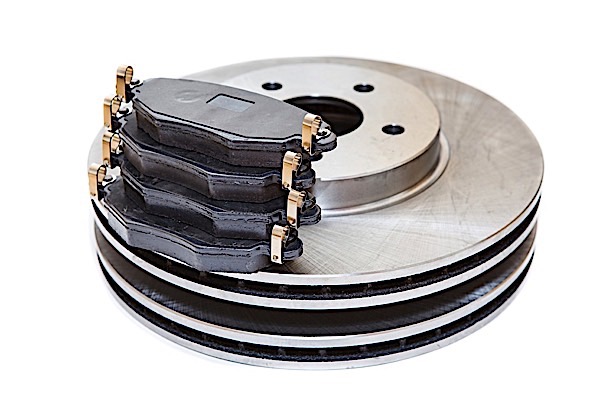Brakes don’t fix themselves, as much as some vehicle owners wish that was the case. Brakes need to be inspected on a regular basis to avoid costly repairs. For parts professionals, that shouldn’t come as a news flash. However, many drivers apparently haven’t gotten the memo, because they wait until the damage is already done, causing the price tag of the repairs to go up substantially.

Typically, brake systems give warning signs when something is wrong, although many drivers aren’t paying attention to the signals. Those whose brakes sound like a locomotive during a panic stop aren’t in tune with what their vehicle needs. Some brake pads have a sensor that will light up an icon on the instrument cluster, warning that the pad material is down to the last few millimeters. For most vehicles, though, there’s a little metal tab on the brake pad that will make a high-pitched scraping sound when the pad
material is down to the minimum thickness – between 3 and 4 millimeters, depending on the application.
Of course, brake pads aren’t the only things that wear out on a braking system. Brake rotors are wear items also and can produce pulsation/judder under braking if the rotor surfaces aren’t parallel, which is a variation in disc thickness. The piston extends or is pushed back into the caliper for the pad to stay in contact as brake-pedal force is applied, which can create a pulsation that the driver feels under braking.

Hydraulic pressure at the caliper drops when there are low spots, and produces less braking force as this area passes by the pads, which can increase braking distances as well.
A lateral brake runout is a condition that occurs when the rotor wobbles from side to side as it spins. Too much lateral runout allows the rotor to push the pads back as the high spot makes contact with the pads. This condition will produce a long pedal (more travel) as the pistons move in and out to compensate for the runout.
A hanging caliper or stuck wheel cylinder can create uneven wear as well as overheat the brake fluid. When the brakes overheat past the fluid’s boiling point, air bubbles are created as the fluid evaporates. The bubbles of air are easily compressed and produce a “spongy” brake pedal. Air also can be introduced into the system if there’s a leaky caliper or cylinder, or a cracked or broken brake line. Spongy brakes are dangerous and require the brake pedal to be “pumped up” enough to stop the vehicle. Look for puddles or fluid on the ground, and check the master-cylinder level. Driving a vehicle with a brake-fluid leak can be dangerous, and it isn’t advisable.
Certain types of brake-pad material also can create noise that some customers might find undesirable. Pads with high metal content such as semi-metallics will offer the best stopping distances and often better brake “feel,” but the downside is that they tend to be the loudest and also create the most dust. For this reason, many OEMs have switched to ceramic pad material in recent years because they’re quieter, easier on the rotors and produce less dust.
In typical driving conditions, most brake pads should last between 40,000 to 60,000 miles and about 3 to 4 millimeters of material thickness before they need replacing. But keep in mind that other circumstances could mean the pads should be replaced sooner – such as uneven wear, cracking (where the material separates from the backing plate) or brake-fluid contamination. Most of these symptoms don’t produce noise and will be difficult to detect without removing a wheel to inspect the brake system.
As a parts specialist, the best thing you can do for your customers is to listen to them. Listen to how they describe the brakes and how they feel or react. You can usually tell pretty well what the problem is from a description of a noise or vibration. And always recommend a brake inspection if there’s any question.
